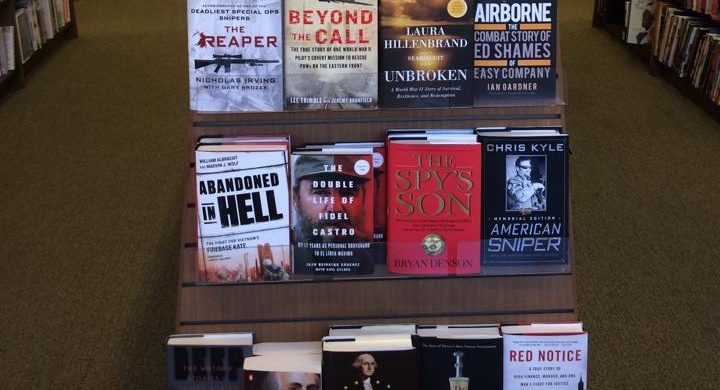All the great writers have proffered wisdom on the craft, the best-in-show quote being Norman Mailer’s: “Writing books is the closest men come to childbearing.” But the literary sages have offered scarce advice to serious long-form journalists on plotting, writing and, most importantly, selling a nonfiction book
So for now, you’re stuck with moi.

Look, m’friends, if a lunch-bucket journalist like me can do it, so can you. All you need is endurance (maximized by a 14-cup coffee maker), great story organization skills, a boatload of time (and the tolerant family that comes with it), the power to shrug off rejections and monophobia, the guidance of a good literary agent, and a smidgen or two of pure damned luck.
Here are six things to consider as you begin your quest to write a nonfiction book.
- You have to be certain that you and your story can go the distance. To keep readers turning hundreds of pages, the tale must be soulful and rock solid, with big bonus points for a news hook. (If you are uncertain about whether you actually have a story, save yourself some time and heartache by reading Jonathan Franklin’s 1986 masterwork "Writing for Story," which changed my freaking life.
- Characters in true stories should be as memorable as the ones in novels. Mark Twain gave us pointers in the development of characters in his excoriation by essay of James Fenimore Cooper’s “literary offenses.” Readers should be deeply interested in all the characters and their fates, loving the good ones and hating the bad ones, Twain wrote before noting that a reader of Cooper’s "Deerslayer" “dislikes the good people in it, is indifferent to the others, and wishes they would all get drowned together.”
- Write a memorable book proposal. The proposal is the junior varsity version of the completed book – a combination sales pitch and master outline intended to get a publisher to bite. If you have never written one, author Jane Friedman’s terrific website has a proposal template that will guide you through the process.
- Find a good literary agent to represent you. This is not always easy, as you will see below. But when you find a good one, hang on to them like grim death — or life.
- Endeavor to get your book published by a traditional publishing house. This will give you the full weight of its editors, copy editors, book-cover designers and marketing and publicity staff. There are alternatives to this — you can hire a publisher or publish the book yourself — but these should be last resorts. (I’ll get hate mail for this.)
- Brace yourself for a series of spirit-killing punches from agents and publishers and critics. When they come, stay on your feet. As the boxers say, you can survive (hell, you can even win) on heart alone. But persistence is paramount, and I learned this the hard way.
A "cosmic crapshoot"
I wrote a true-crime serial narrative for The Oregonian in 2003 called “Grave Injustice,” which explored the global black market for Native American antiquities through the prism of Jack Lee Harelson, the most prolific looter and grave robber in the American West. The story had a dark-hearted villain and a heroic detective (whom the villain attempted to knock off in a contract killing). But the soul of the story was the ghastly spiritual wound inflicted on the Paiute people, whose ancient children were ripped from the earth.
Related stories
Story Craft: Part 2: So you want to write a book? Bryan Denson on queries and timelines
Story Craft: Bryan Denson tackles a true-crime series for middle schoolers
Narrative News: Chip Scanlan’s journey through self-publishing
My plan was to expand this tale into a nonfiction book, but I didn’t know the first thing about the publishing industry. All I knew was that I needed a literary agent, and a friend recommended his.
I wrote a book proposal and sent it to her, hoping for success and believing that a book deal (and the money that would come with it) might save my teetering marriage. But the agent soon phoned to say she really didn’t get the story, and she declined to represent me. I remember exactly where I was when I took that call, standing in a business tower trying very hard not to let her hear me hyperventilating. Later that night, my wife told me she wanted a divorce.
Eight years later, I wrote "The Spy's Kid," another long-form serial narrative that told the story of the highest-ranking CIA officer ever convicted of espionage and his thrilling second act of spying from behind bars. Inside a prison visiting room, Jim Nicholson recruited his college-age son, Nathan, to smuggle his paper messages out of the lockup into the hands of Russian spies on three continents. Nathan traveled the globe, serving as his dad’s go-between in clandestine meetings with the Russians.
Two friends suggested a literary agent in San Francisco, to whom I sent my book proposal. We also chatted by phone. Later I received his surprising email, which let me know that he did not think my spy story had the makings of a book. He averred that he had been wrong before in such matters, and I decided to believe he was wrong again.
I reminded myself that readers loved the father-son spy tale. Reader’s Digest later carried a condensed version, one of the longest stories ever carried in its pages. I had also signed on with movie producer Scott Glassgold, who was busily working Hollywood studios to get my story optioned as a feature film.
About this time, a literary agent in New York contacted me to say that she had read “The Spy’s Kid” on Longform.org. Tamar Rydzinski asked if I was planning to write a book about the case and did I have an agent? I told her I did not (leaving out the part about my rejection by the improvident agent in San Francisco) and emailed her the latest draft of a my proposal.
Tamar agreed to represent me (I celebrated with strong drink) and we threw the proposal back and forth in a series of collaborative edits. Tamar later mass-emailed the revised proposal to a slew of publishing houses, but I found it hard to remain optimistic. The publishing industry, as I had come to see it, was a cosmic crapshoot and destroyer of dreams.
But dreams, as it happens, do come true. Six publishers jockeyed to purchase rights to the book, and Tamar put it up for auction. I later signed a book deal with Grove Atlantic, which assigned a brilliant editor, Corinna Barsan, whose help and encouragement would help bring "The Spy’s Son" into the world.
Come back tomorrow. I'll take you through my four essential steps, and sketch out how I developed the outline for "The Spy's Son."
***
Bryan Denson worked as a reporter for 33 years, at five different newspapers. He now freelances from his home in Portland, Oregon, and is the author of four nonfiction books.



